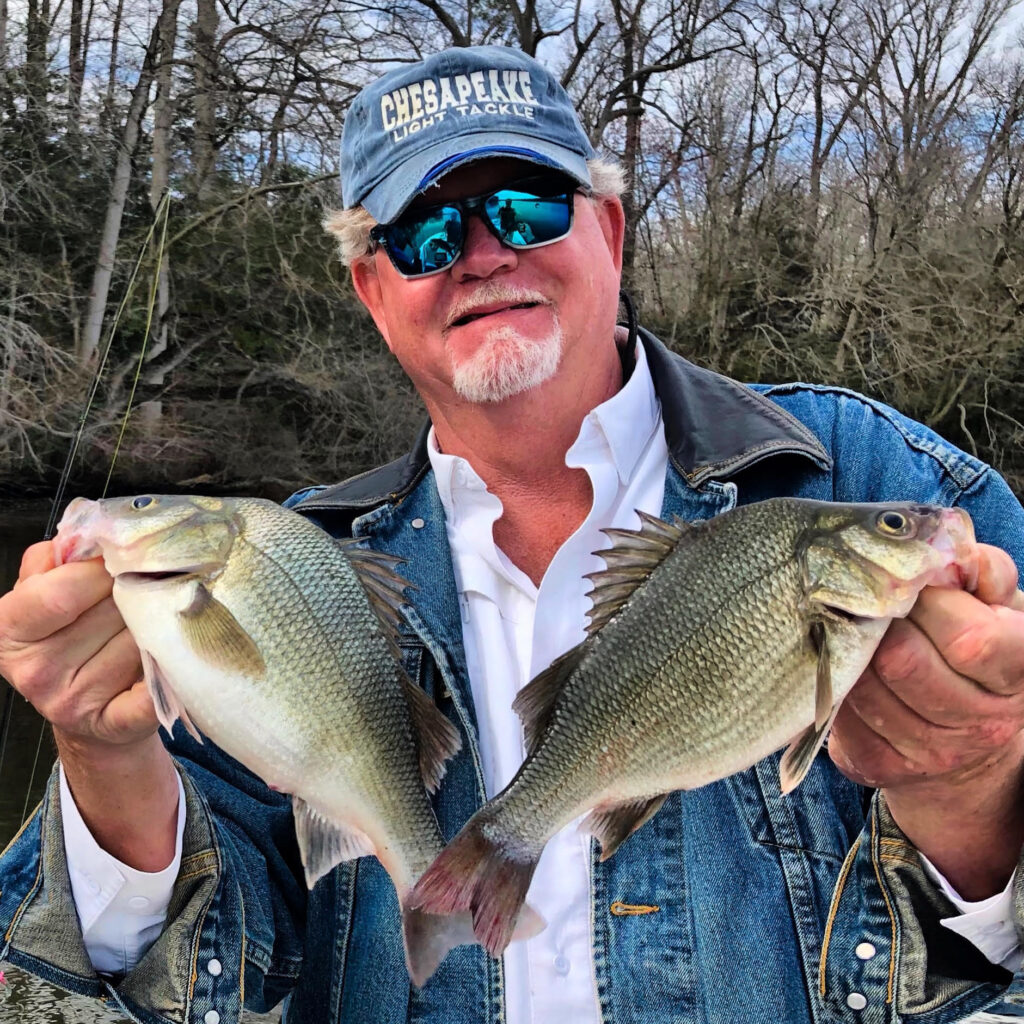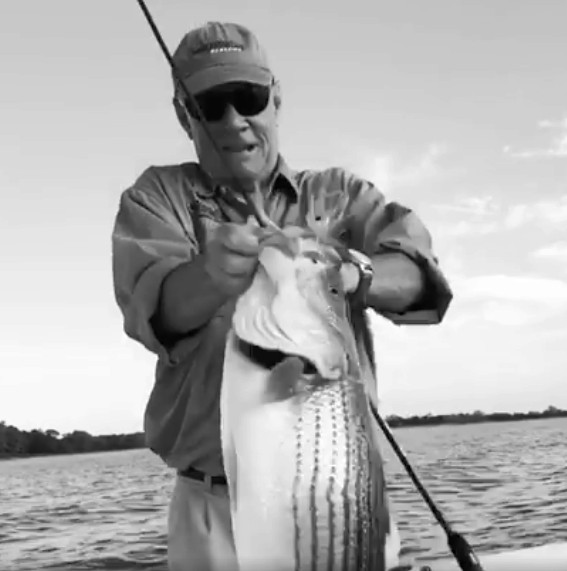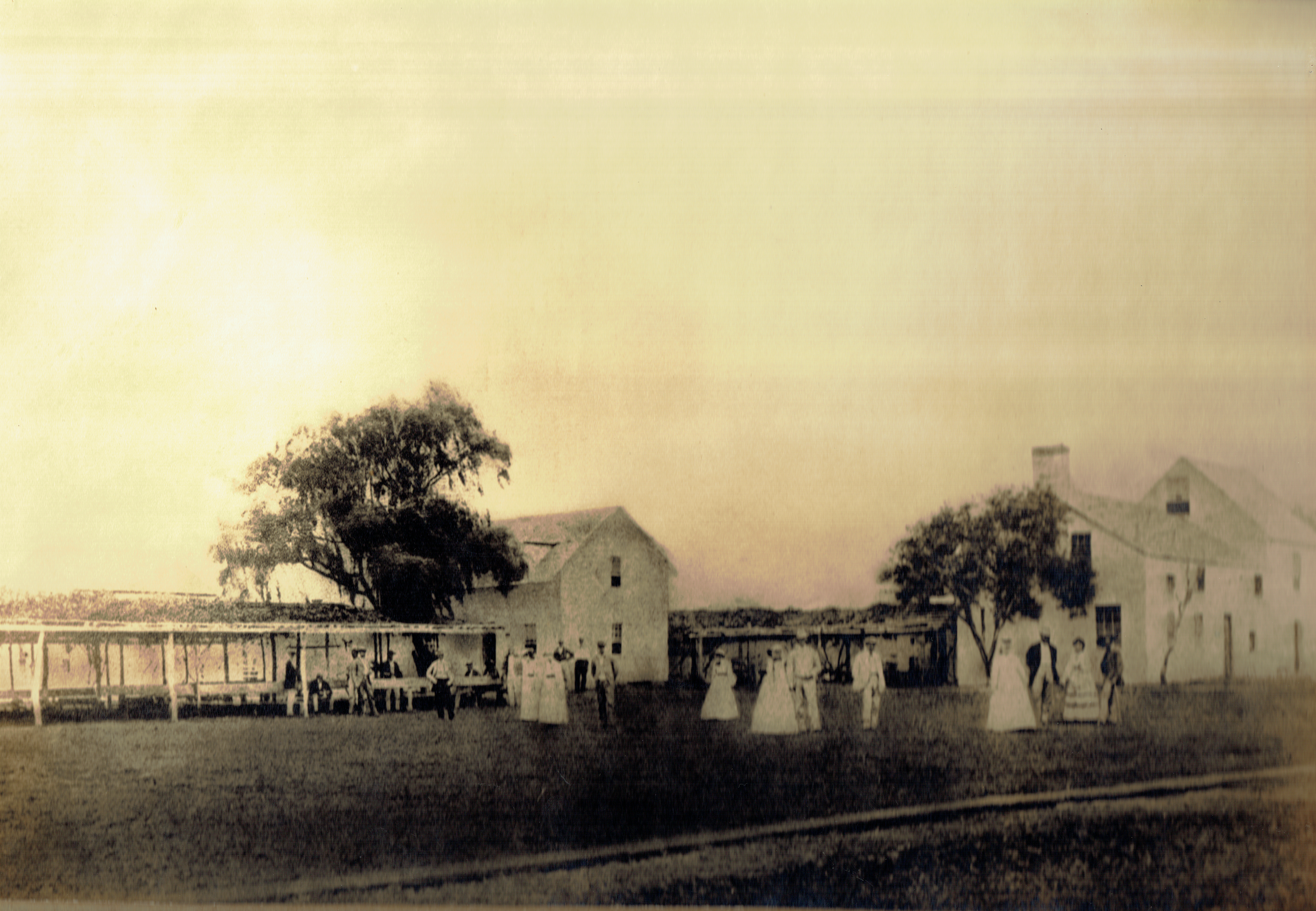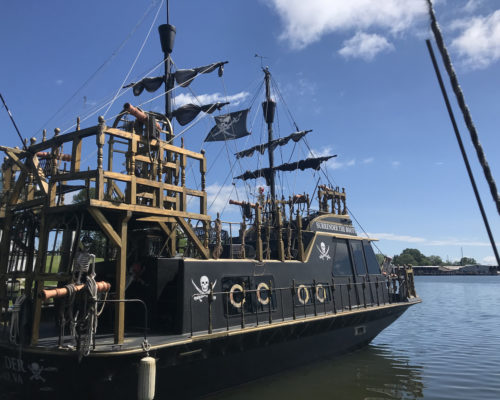When Shawn Kimbro was a lad in East Tennessee he sometimes took his fishing pole with him on the bus to school. He’d slip off truant before the first bell rang and fish his way back home in the creeks around Cherokee Lake. “If I timed it right, I’d get home just about the same time as the afternoon bus.”
Nobody ever questioned how he’d obtained a bag of panfish in the classroom. Times were hard, money was short and with four boys to feed, dinner fixings were not to be challenged.
From these humble origins came one of the Chesapeake’s most admired sportfishermen and conservationists. Kimbro is the author of three popular fishing books. He sits on the board of directors of the Alliance for the Chesapeake Bay and the Coastal Conservation Association, and is an adviser to the Atlantic States Marine Fisheries Commission. Somehow, alongside all that, he founded and runs the Sleep Medicine Program at George Washington University in D.C. and plays solid bluegrass rhythm guitar.
“Bluegills gave me my work ethic,” he says. As the eldest son, he got to fish with his dad as soon as he was big enough to sling a worm. They would fill a burlap sack with bluegills and crappies; his job was to clean them. “I could sit there for two hours cleaning fish. I learned that if you keep your head down and stick to it, you can finish anything.”
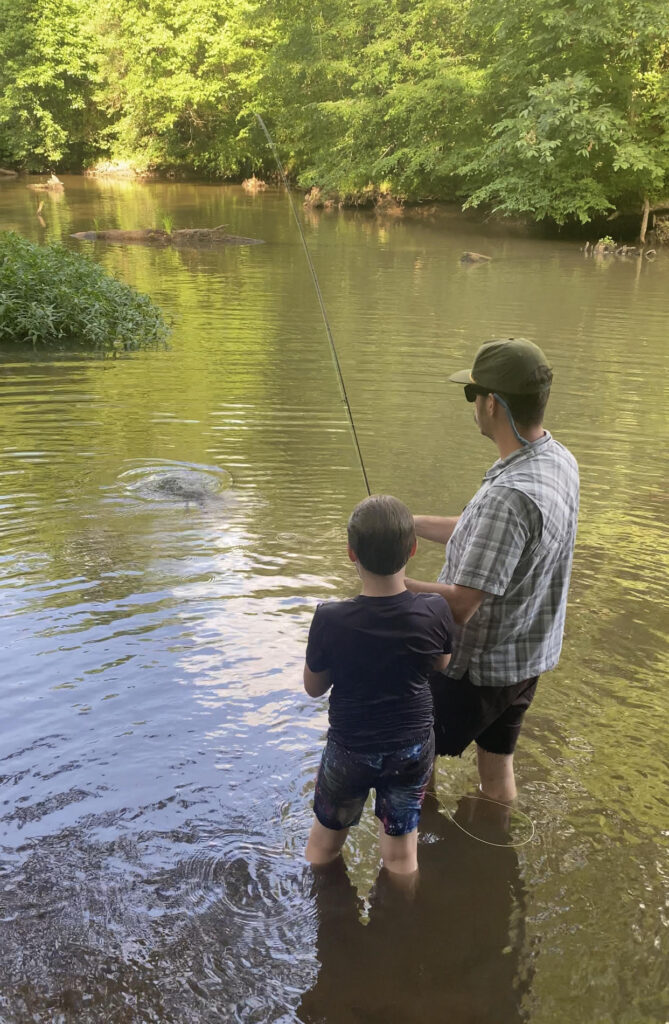
Photo by Shawn Kimbro
Kimbro’s first two books were mostly about the Bay’s premier game fish, striped bass (local Bay name: rockfish). But the third, his latest, speaks to his first and foremost love: “How to Catch Chesapeake Panfish.”
Now, a lot of fishing books have been written by people who don’t really know that much. They talk to experts and compile their second-hand dossiers and you can take it or leave it. To confirm his bona-fides, I asked Kimbro to take me perch fishing with him this spring. We launched his 40-year-old jon boat on the upper Choptank River in the early stages of the white perch spawning run.
We putt-putted along upstream until we could putt no more, through the briers and brambles and fallen trees to a barren, unremarkable dead-end where the water was dark, slack and thick with twigs and branches to hang up on and lose your lure.
He handed me a small box of live grass shrimp and a couple of tiny jigs, plus the smallest bobber you’ve ever laid eyes on. “If you get hung up, just try to save the bobber,” he said. “You can’t buy these things anymore.”
He’d caught a half-dozen perch and a bluegill or two while I extracted my lure from multiple snags before I finally got the hang of it and set the hook on my first white perch of the season, a little fellow so puny he could barely pull the bobber down. “Relax,” said Kimbro, “you’re in my living room. I do this all the time. You’ll figure it out.”
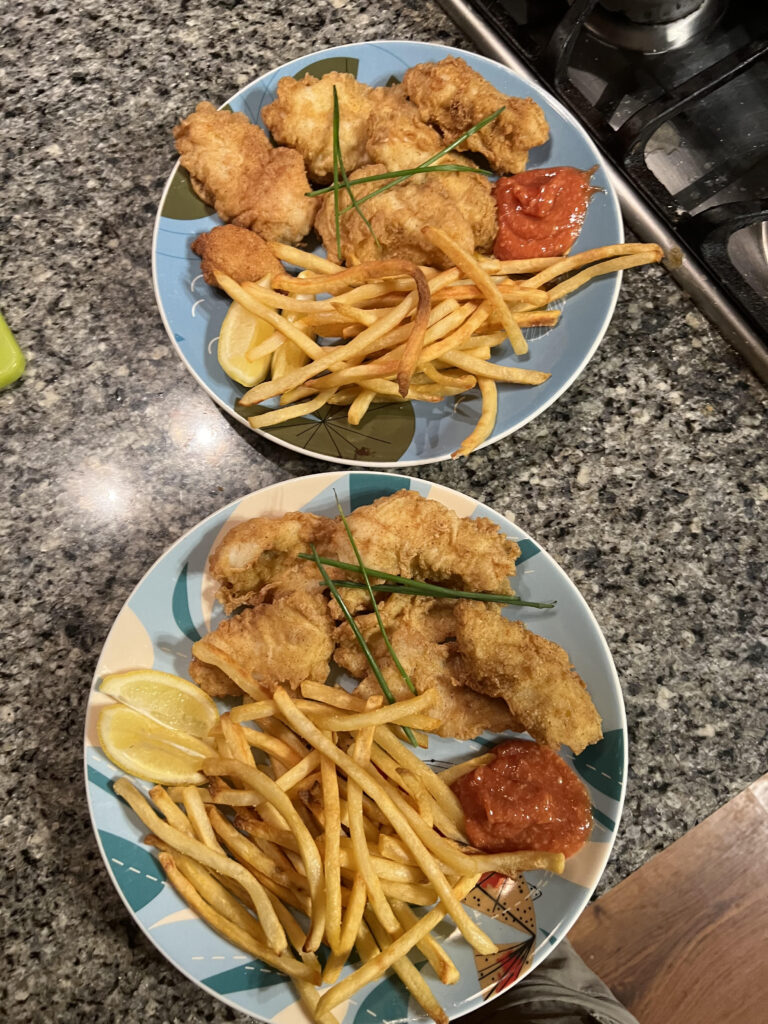
Photo by Shawn Kimbro
We set a goal, which is crucial in perch fishing: Keep enough to feed me, my wife, and my crabbing partner and his daughter, to whom I’d promised filets. We wound up saving 20 fish, which was about right, and tossed back 30 or 40 more, mostly small. Kimbro said he’d had enough perch dinners for the time being and needed none.
Someone is now bound to howl: “You call yourself a conservationist but you’re keeping fish that are running upstream to spawn? You’re killing the goose before she can lay her golden eggs!”
To which Kimbro (and I) would respond: Fair point, but in this case not applicable. Perch are so abundant in the Chesapeake, and so lightly exploited, that they are in no danger of falling victim to human greed, at least for the foreseeable future. And, while they may be time-consuming to clean, the filets are delicious, both white and yellow perch being widely considered the firmest, finest-tasting fish in the Bay. And this bottom line is why we love to catch them.
“We’re not hurting them,” says Kimbro, who has quit fishing for spawning rockfish in the spring out of concern for their declining numbers. “You can keep a mess of perch and not hurt anything.” That applies even to yellow perch, he said, which are less abundant than whites hereabouts, but plentiful elsewhere across the country.
The spring perch spawning run ends in May and yellows get hard to find. But white perch stay plentiful and easy to catch all summer long and into the fall. “They like to hang around rocks and oyster shells,” Kimbro says, pointing to places like Poplar Island, Kent Point and Bloody Point on the Bay’s Eastern Shore or Thomas Point and Hackett’s Bar on the Western side, and the rockpiles at both ends of the Chesapeake Bay Bridge.
White perch congregate in summer where the water is 6- to 20-feet deep with some kind of underwater structure to cluster around, natural or man-made, and they cannot resist bloodworms or grass shrimp fished on or near the bottom.
While Kimbro is not averse to using bait when necessary, he generally catches all the white perch he wants using artificial lures, mostly small jigs of 1/16 or even 1/32-ounce floated under a small bobber in shallow water, or on top of a small sinker to get to the bottom in deeper water. The perch are attracted to motion, so he gently twitches the jigs to draw a strike. „
A consummate striper fisherman, Kimbro says perch fishing is just like rockfishing only everything is smaller—smaller fish, smaller water, smaller lures or baits. “White perch and rockfish are from the same family. They like the same habitat. It’s the same technique, only downsized for perch. A good perch fisherman will be a good rock fisherman.”
As for cleaning, he sometimes guts, scales and cooks them whole, picking the meat off the bones with a knife and fork; but the preferred method is fileting, a skill learned only by hard experience. A white perch filet, neatly carved off the fish’s flank with a Rapala fish knife, with skin removed, is about the size of a chicken nugget but indescribably better.
Kimbro’s mom passed away when he was just 13, leaving her oldest boy to do most of the family cooking. His recipe for panfish filets has not changed over the years. Here it is:
Dredge damp filets in flour, then dip into a milk/egg mixture, then dredge again in Panko or Autry’s fish batter, both of which can be found at the supermarket. The filet then goes into hot vegetable oil (375 degrees) for a couple of minutes on each side until the batter browns, then onto paper to drain the excess oil and straight into your mouth, piping hot, for two bites of piscatorial ecstasy.
Six to eight filets ought to satisfy even the keenest appetite. Throw in fresh corn on the cob and tomatoes from the garden and you can safely say that no king ever ate better.
Angus Phillips was outdoor editor of The Washington Post for 35 years, covering the fishing, hunting and boating scene both locally and globally. He’s lived in Annapolis since 1983.
See also https://www.chesapeakebaymagazine.com/chesapeake-panfish/

